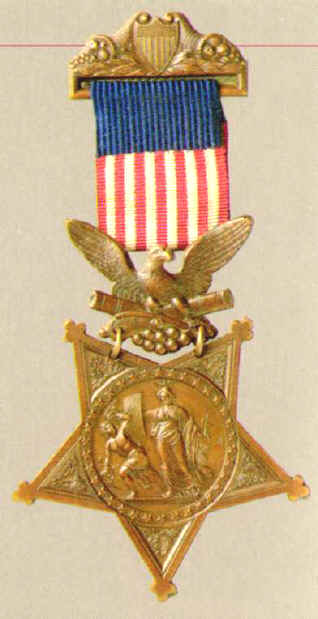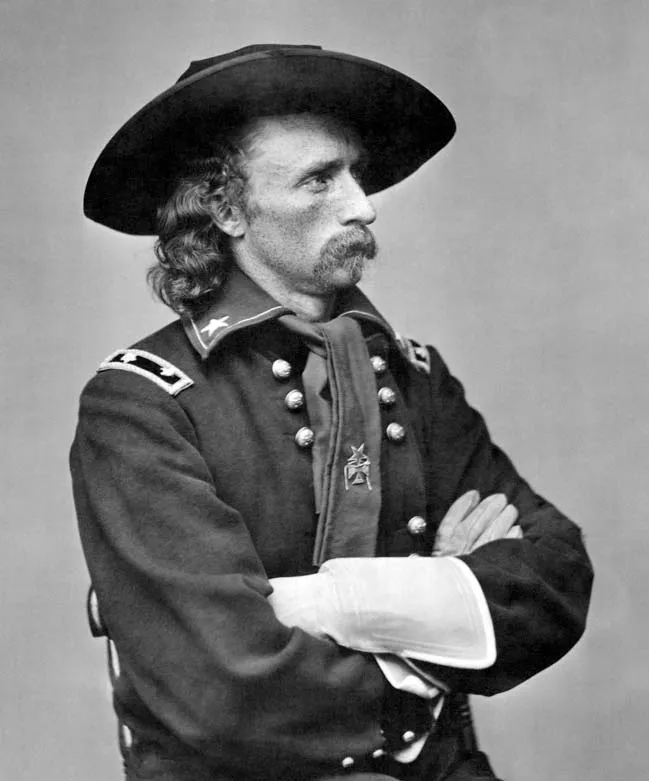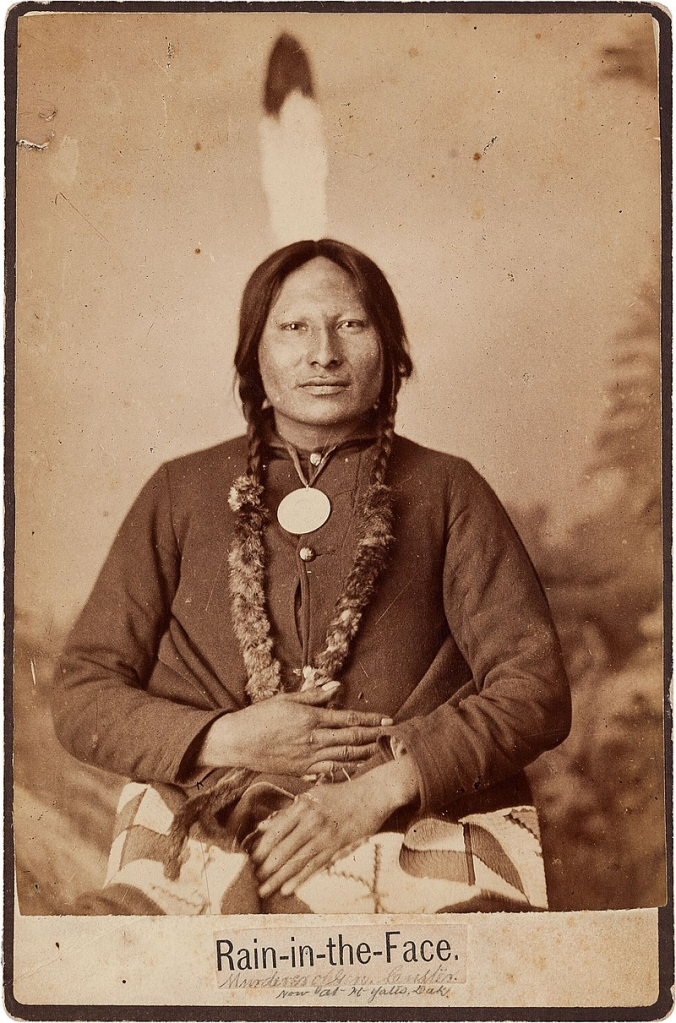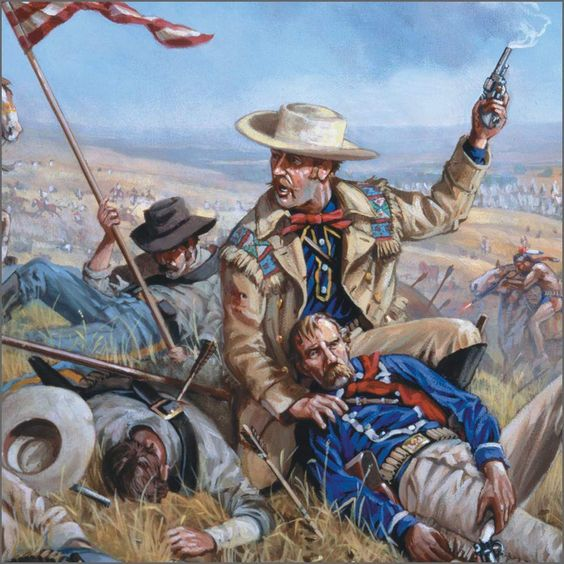
George Armstrong Custer rode to immortality (or infamy, depending on one’s view point) when he led the 7th Cavalry down into the valley of the Little Bighorn River, on June 25, 1876. By the next day he was one of 268 men of the 7th lying dead among the grassy hills above the river. But George wasn’t the only Custer who died that day. With him were two of his brothers and a nephew, as well as a brother-in-law. One of those brothers was the first man to ever win the Medal of Honor not once, but twice. He is the “Other Custer” few Americans know about.

Thomas Ward Custer was the younger brother of George Armstrong Custer. Born March 15, 1845, in Rumley, Ohio, he was the third son of Emanuel and Marie Custer, born six years after his more celebrated sibling. Boston Custer, the youngest of the brothers and the other to die on the slopes of the Greasy Grass battlefield, was born 3 years later.
The Custer boys were a tight-knit group, fond of playing practical jokes on each other. When the Civil broke out, 16 year old Thomas enlisted in the 21 Ohio Volunteer Infantry as a private. His older brother George (whom the family called “Autie”) had been accepted into West Point in 1857. When the war broke out, his class was prematurely graduated and commissioned in June of 1861. Custer graduated at the bottom of his class: he had the dubious distinction of having one of the worst conduct records in the history of the academy, amassing a record total of 726 demerits. Custer showed a complete disdain for his lessons, and always tested the rules and boundaries. Commissioned as a second lieutenant upon graduation, George was assigned to the cavalry.
While George quickly proved himself a far better combat soldier than a student, and rose rapidly in rank in the cavalry, serving in the eastern theater; Thomas Custer saw action over the next few years in the western theater. He fought at Second Battle of Murfreesboro, Missionary Ridge, and Sherman’s Atlanta Campaign. He left the army in 1864, mustering out with the rank of corporal.
However, the war was not yet over, and Tom Custer returned to spend the last year of the Civil War serving under his brother, George; now a Major General and Phil Sheridan’s strong right arm. Thomas Custer had made the jump from enlisted man to officer, now commissioned a Second Lieutenant of Cavalry. It was in the cavalry that the younger Custer came into his own. In this capacity he won not one, but two Congressional Medals of Honor.

On April 3,1865, at Namozine Church, now Captain Tom Custer led an attack on the 2d North Carolina Volunteer Cavalry Regiment. Custer spurred his horse over a makeshift barricade and among the defending Confederates. Mindful that his brother George had won acclaim during the Peninsula Campaign by being the first to capture a Confederate Battle Flag, Tom seized the flag of the 2nd North Carolina from the bearer, commanding those around him to surrender. He took three officers and eleven enlisted men as prisoner. For this piece of gallantry, Thomas Custer was awarded his first Medal of Honor.
Not satisfied with merely matching his brother (and commander), three days later, at Sailor’s Creek, Tom Custer charged through a blizzard of enemy fire, again leaping a barricade to land amidst the Confederate defenders. Firing his pistol to either side, he broke the enemies will to fight and sent them scattering in rout. However, the Confederates fell back upon a second line, rallying around a battle standard. Tom Custer spurred for that color-bearer. As he reached the standard, Tom was shot in the face, a graze along the jawline that sent him reeling back in the saddle. In a moment Custer was again upright, and shooting the standard bearer through the heart he snatched the banner from his dying grasp.
The standard held triumphantly aloft, a bloodied Captain Custer rode back toward his own lines. A fellow officer rode up to him, warning him against riding toward Union lines bearing a Confederate standard. “For God’s sake, Tom, furl that flag or they’ll fire on you!” Custer refused, and successfully reached his brother George, amidst his staff observing the fight. No doubt proud to have outdone his renown brother, capturing two enemy flags to George’s one, Thomas handed the banner to one of General Custer’s aides, saying to George, “Armstrong, the damned rebels shot me, but I’ve got my flag!”
When Tom attempted to return to the fight, his brother, seeing the gaping wound in his brother’s face, instead ordered him to the rear and the surgeons tent. When Tom attempted to shrug off the wound, George ordered a squad to “escort” Captain Custer to the rear, against Tom’s best efforts to disobey that particular order.
This is the “other Custer”. One heroic son of a bitch.
For his actions at Sailor’s Creek, Tom Custer was awarded his second Medal of Honor.
Like his brother, Tom Custer was sent out west after the war ended, appointed a First Lieutenant in brother George’s 7th US Cavalry Regiment. He was wounded in Custer’s famous Washita Campaign of 1868, in action against the Cheyenne; and fought in a skirmish against the Lakota in August of 1873 at Honsinger Bluff. It was in the aftermath of the latter engagement that Tom Custer became involved with his nemesis.

The leader of the Sioux war party that had ambushed Custer’s men at Honsinger Bluff was a warchief named Rain-in-the-Face. The following year it was learned that he was staying at the Standing Rock Reservation, bragging of having killed the 7th Cavalry’s senior veterinarian surgeon, Dr. John Honsinger; and showing off Honsinger’s gold watch, lifted from his corpse. Lt. Tom Custer was sent to arrest the chief. Rain-in-the-Face vowed to cut out Tom Custer’s heart and eat it!

Two years later, Tom Custer was serving as his brother’s aide-de-camp when the 7th Cavalry attacked the combined Sioux, Northern Cheyenne, and Arapaho village at the Little Bighorn. Much ink has been spent on what became the United States’ worst defeat in the Plains Indian Wars, and need not be recounted here.

All three Custer brothers were killed. Lt Col George Armstrong Custer was found with a mortal wound to the left side of the chest, and another fatal shot to the temple. One theory is that Tom Custer put his brother out of his misery and beyond capture (and torture) by the Lakota with a shot to the head. It is also said (though he later denied it) that Rain-in-the-Face may have unhorsed George Armstrong Custer during the battle and afterward, fulfilling his vow, cut the heart out of the fallen Tom Custer’s corpse; which was found so badly mutilated that the remains were identifiable only by his initials, tattooed on his arm.

Though George Armstrong Custer is rightfully the more famous of the Custer brothers, Tom Custer too deserves to be remembered. He was one tough, brave man.


